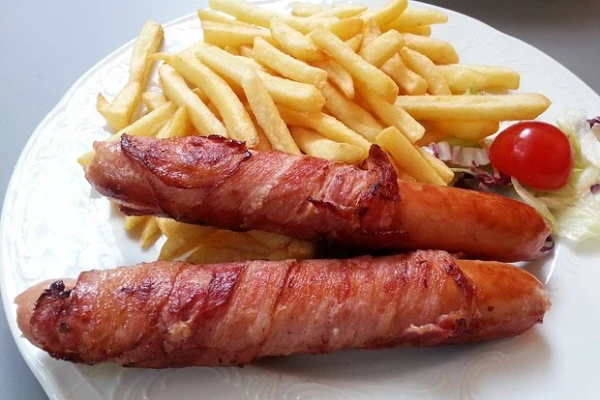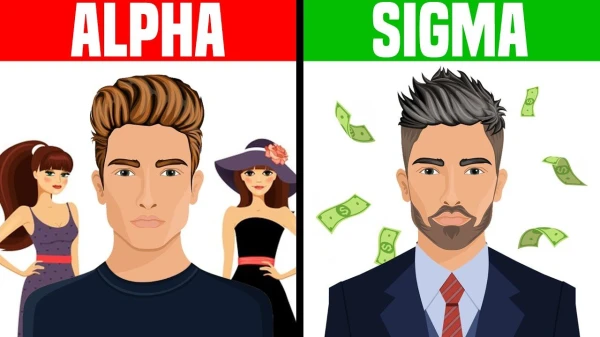
A wrinkled collar — yes, but only if it is made of good cotton.
The "tired woman" style and its related aesthetic of "messy girl" is a new trend of authenticity. After several years of "glossy glossiness" and perfect contours, we suddenly grew tired of "success" and learned to love our true selves: with messy hairstyles, slightly wrinkled blazers, and soft gazes that reflect more irony than stress. The style that has suddenly become the most fashionable reflects not carelessness as a pose, but vulnerability, acceptance, and a return to a human rhythm. We explain in detail.
Not long ago, the word "fatigue" had no right to exist in the public sphere — it was displaced by formulas of productivity, "balance," and inner glow. A woman was expected to be composed, well-groomed, always prepared, and perfect, like a glossy magazine cover, even if everything was falling apart in her life.
But now, makeup done with fingers, unkempt or completely unstyled hair, pants you could sleep in and wear out for coffee — these are not signs of indifference to oneself, but a new sincerity, an aesthetic that contains fatigue but also remarkable dignity. The concept of "tired woman" first became viral on TikTok and other social media — as a counterpoint to the idealized image of the "clean girl" with her eternal smoothness and peach glow. Where one strives to be flawless, the other simply wants to be. And this shifted perspective is not accidental: the faster the world accelerates, the more we want to slow down, at least on the outside.
The roots of the current trend stretch back to the 2000s — a time when heroines of cinema and pop culture first showed that a woman's life does not have to be perfect. Bridget Jones, with her eternal messiness, untimely confessions, and a glass of wine in front of the TV, became a symbol of a woman who does not fit the mold. What seemed like comedy then is now a manifesto.
The aesthetic of the tired woman grew precisely from this line — it is not just "unkemptness," but a special emotional code that conveys both fatigue and inner warmth. It is inspired not only by Bridget Jones but also by cinematic figures like Kate Winslet's character from "The Holiday" or Sofia Coppola's characters — women who wander, search for themselves, yet remain harmonious and beautiful in their chaos. Even the characters from "Sex and the City" after parties, where their makeup is smudged but charisma remains, have also become archetypes of a new sincerity.
If in the 2010s we were inspired by a successful heroine with a clear plan and a sleek ponytail, today we look to one with a tousled fringe, a cup of coffee in hand, and a slight lost look in her eyes. We have already discussed how fatigue burst into fashion. This style became popular not because people suddenly wanted to look unkempt. At its core is the desire to be oneself without the need to justify. Women no longer want to pretend that everything is under control: a slight crumple, a tired face, a chunky sweater that looks "a bit out of place" — this is a new language of tenderness towards oneself.
In an era where every day is an informational storm, fatigue ceases to be a weakness. It becomes a means of communication — a visual statement that you are living, feeling, and do not have to be perfect.
This fashion does not require justifications — you can allow yourself to pair a cashmere scarf with a misshapen bag, wear a light shirt without ironing it for 20 minutes, or go out in a sweater that looks slightly stretched — all of this creates the image of a woman who lives, not rehearses life.
But behind the visual fatigue lies a new level of self-respect. In this aesthetic, there is no gloss, but there is depth: as if you have removed everything unnecessary from the world and left only what is truly yours — soft fabric, natural color, honest gesture.
But it’s not that simple — the paradox is that this very image requires more taste and attention than the seemingly perfectly calibrated "clean girl" style. Here, you cannot hide behind flawless makeup and a sleek bun — every detail must look natural, but not accidental.
A wrinkled collar — yes, but only if it is made of good cotton. A chunky sweater — yes, if it doesn’t look cheap. Natural and imperfect makeup — great, but the skin must be well-groomed.
This style is built on a balance between reality and aesthetics. A woman who looks "tired" yet elegant makes a powerful impression: she does not seek approval; she simply exists. Her clothes are slightly softer than necessary, her coat seems a bit oversized — but this is not indifference, but a gesture of freedom. It seems that fatigue can only be a negative symbol. However, fatigue in the "messy girl" style reflects not burnout but a new sense of self. It is fatigue from excess: endless display, visual noise, the questionable necessity to be better than everyone else.
The adult, calm, even slightly slow aesthetic has become a response to the anxious rhythm of the world. We see how the "tired woman" becomes the antithesis of influencer perfection: she allows herself not to hide her emotions, not to chase ideals, and not to try to prove that everything is under control.
Some call this style visual poetry of maturity, as it emerged where fashion intersects with psychotherapy: at the point where a person stops striving to be better and begins to simply be real.












Leave a comment